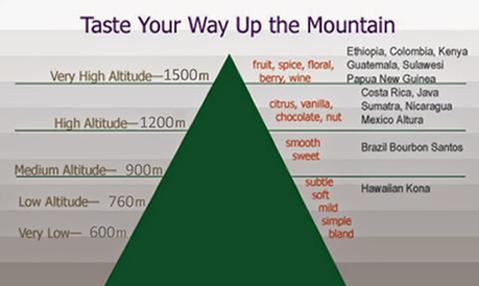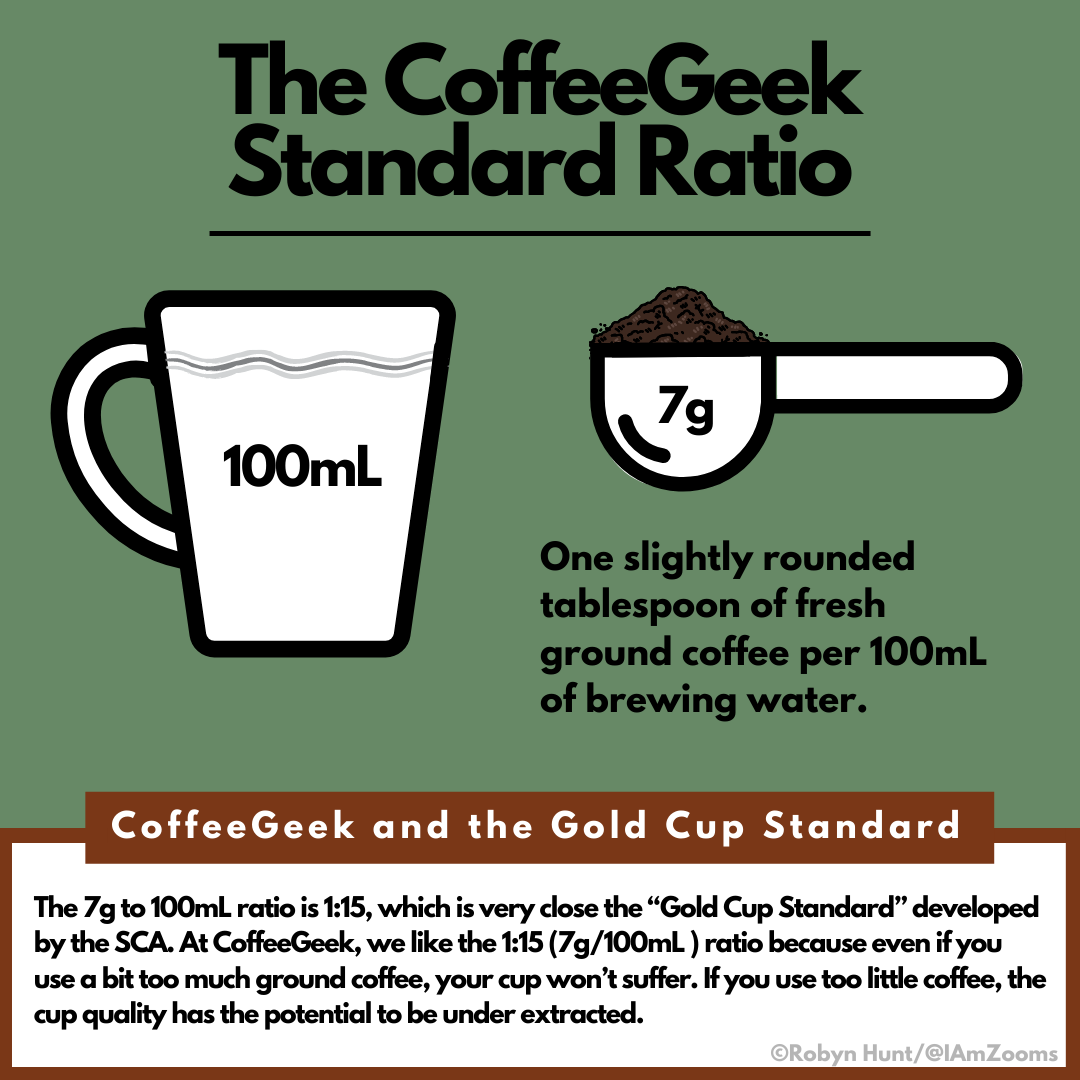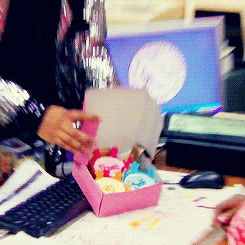Products You May Like
Have you ever locked lips with your coffee mug, happily anticipating the chocolaty caress of roasted arabica, only to be greeted with an acrid, mouth puckering brew from hell? Bitter coffee. That’s one ticked off mug. If your java is too bitter, there can be more than one culprit – from the incorrect grind to the wrong temperature, a dirty machine or expired beans. Here are nine common reasons why your coffee might be tasting off and how to fix them.
Where Was Your Bean Born?

Location! Location! Location! Sort of. It’s always important to read the label and check out where your beans were born. First off, if your coffee bag says Robusta, there’s your issue, but not really. All kidding aside, Robusta beans are easier to grow and are commonly cultivated at lower elevations (600 – 760 meters or 1,968 – 2,493 feet), thus making them cheaper to buy. These beans also contain more acids and less sugar, and when roasted, end up tasting bitter. On the flip side, Robusta’s high-maintenance cousin Arabica grows best at higher elevations (1200 – 1500 meters, 3,937 – 4921 feet) and contains sweeter notes that are generally brought out with roasting.
One other thing about Robusta: it has two times the caffeine that Arabica does. You may think that’s totally worth it, but know that pure caffeine is one of the most horrific and bitter substances known to mankind.
So, what can you do? Stick to higher elevation beans, aka Arabica. Some examples are Ethiopian (sweet blueberry notes), Mexican (dark chocolate undertones), or Columbian (nutty and herbal flavors).
Indulge the Senses – The Nose Knows
Who doesn’t love smelling a freshly opened bag of beans? The whole world could be falling down around you, but the smell of fresh coffee will almost always make you feel like everything will be ok. This is one of the first ways you can tell if your coffee has gone south. If your beans smell weak, they’ll taste weak. If they smell acrid or have any visible signs of decay, throw those suckers out. Don’t even think about brewing that.
Also, be sure to check for a “Roasted on” date, and make sure that the date is within a few weeks. Quality roasters aren’t afraid of providing roasted on dates. Roasters who have their coffees destined for big box and mega mart shelves use expiration dates, which won’t tell you when the coffee was roasted. It’s a little realized fact that coffee, just like any other consumable item, doesn’t have an infinite shell life. You’ll definitely be able to taste that if your beans have gone bad. Bleh.
You Can Have Too Much of a Good Thing

Coffee is precise. That’s why there are normally brewing instructions on each bag you purchase. If you add too much coffee and not enough water, your brew will be bleh. Same for using too much water – the end result will be a less than tasty cuppa and a less than happy drinker.
At CoffeeGeek, we recommend 7g of coffee (one slightly rounded tablespoon) per 100mL (100g) of water for automatic drip brewers and pour overs. You can adjust the water amount based on personal preference.
The roast level also determines what temperature you should be brewing at. The general coffee rule of thumb is the darker the roast, the lower the brewing temperature. So your light roast would use around 96C (205F), but your dark, delicious French Roast would rather brew in 90C (195F).
The same goes for temperature. If your water temperature is too hot (over extraction) or too cold (under extracted), your brew will taste bitter, low quality, and flavorless. The ideal water temperature for brewing most any coffee is 96 Celsius (205 F).
Purchasing a thermometer is the best way to gauge your temperature.
How Dirty Is Your Brewer?
You’ll want to also make sure that your machine/brewer is clean. It’s recommended that at-home coffee machines are cleaned every three to six months. If you’re running a café, then you should be giving your brewer a thorough cleaning every four to six weeks.
How’s Your Water?
What kind of water are you using when you make coffee? Is it bottle or form the tap? Depending on your municipality, water quality might be an issue. Chemical compounds in water can alter the flavor of your coffee (some can make it taste better, others can make it taste less than desirable).
You can test your water quality by sight and smell (your water shouldn’t smell bad, and it should be clear and free from particles). Check your pipes for any corrosion or mineral buildup. You can also purchase an at-home testing kit. This is probably the most reliable.
The ultimate solution? To keep your coffee brewer clean from impurities. It’s suggested that you use filtered water as opposed to straight from the tap. In the end, your mouth will thank you.
I’m Sorry, Did You Just Microwave Your Coffee?
We’ve all been guilty of this: microwaving coffee to heat it back up. No judgements. Why waste a perfectly good cup? Just and FYI, the flavor will never, ever be the same as a fresh cup. The second it’s brewed, coffee begins to lose its flavor and starts to degrade.
If leaving your coffee pot or microwaving your java juice to reheat is your M.O., it’s time to brew as you need. It doesn’t take long to brew a cup of Joe, so you can just take those three to five minutes as a time to appreciate the aroma and the complexities of the miraculous little coffee bean. It’ll also save you money in the long run – less wasted coffee means more money to spend on, well, more coffee.

It’s Not Me, It’s You
While big box, grocery store, or mainstream coffee may better suit your wallet (no judgement – this blogger swings both directions) it’s worth splurging a little to make sure you’re getting the best quality beans you can get. Plus, you’re supporting smaller roasteries, and you’ll know the exact date that your beans metamorphized from green and clean to roasty toasty.
Remember that generic and big box coffee is inexpensive because, you guessed it, the beans aren’t that great (and you don’t know the roast date!) This isn’t always the case, but it’s better to ere on the side of caution. Treat yourself!
It’s Not Me, It’s the Roaster
We’re all human. We all make mistakes, even the courageous superheroes that roast our beans that help fuel us so we can get a move on in the morning. While this isn’t a common occurrence, over-roasted beans do sometimes happen. It’s the nature of the beast.
It’s Not You, It’s Me
It’s time to face the harsh reality that, well, maybe you don’t even like coffee. And that’s ok! Coffee is an acquired taste, so give yourself a pat on the back for trying. You can’t make yourself love coffee. But you can learn to appreciate it. How? Expand your knowledge about coffee. Read about it (did you know that CoffeeGeek helped start the specialty coffee movement?)
Keep on trying different varieties of bean and different types of drinks. Take a class on coffee. Why not call your local roastery and ask if they do cuppings? Maybe you’ll find that the more you know about coffee, the more you’ll begin to like it. The world is your coffee cherry – go forth and taste on!
Robyn earned her coffee stripes working as a barista up and down the California coast. After ten years, she moved from behind the bar to behind a desk as the inside sales rep for a local wholesale coffee roastery. She is currently a contributing writer at BuzzFeed and works in social media marketing and design. When it comes to espresso, nothing makes her happier than a decadent crema.


